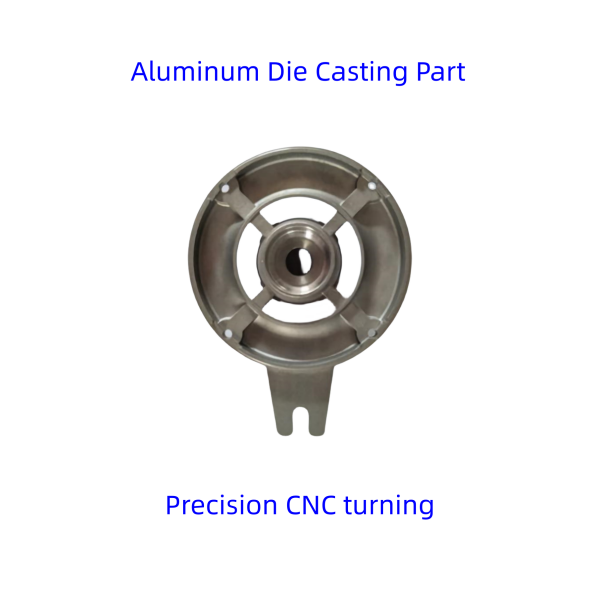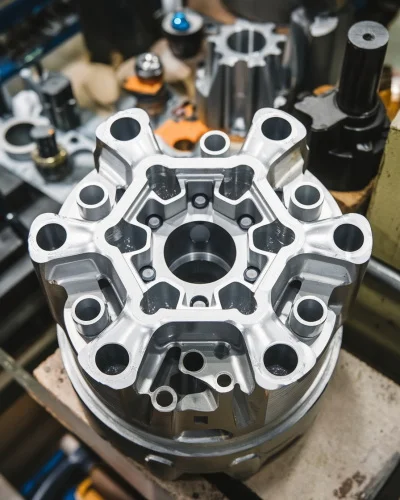Exploring the Innovative Procedures Behind Modern Light Weight Aluminum Foundry Procedures
Modern aluminum shop operations are undergoing considerable change. Automation and AI are improving production methods, boosting both effectiveness and accuracy. The integration of 3D printing is simplifying mold production, while sustainability methods are becoming a lot more vital. Each of these developments plays an essential function in redefining the industry. However, the effects of these modifications extend past simple production efficiency. What chances and obstacles exist ahead for aluminum shops in this developing landscape?
The Duty of Automation in Aluminum Foundries

Additionally, automation adds to improved security standards within the factory environment. By transferring harmful tasks to equipments, human workers can concentrate on managerial roles and quality assurance, decreasing the risk of accidents. On top of that, data analytics derived from automated processes offer beneficial understandings right into functional performance, resulting in much better decision-making and constant enhancement. As the demand for light weight aluminum items grows, the adoption of automation innovations will likely expand, additionally transforming the landscape of aluminum foundry operations.
Improvements in Casting Technologies
Recent improvements in casting innovations are transforming light weight aluminum shop procedures. Developments such as 3D printing combination, progressed alloy formulations, and automated process optimization are boosting effectiveness and item high quality. These advancements are pivotal in satisfying the progressing needs of the market.
3D Printing Combination
Incorporating 3D printing technology into light weight aluminum shop procedures has actually changed typical casting methods, boosting both performance and accuracy. This innovative technique enables the quick production of complicated mold and mildews and cores, substantially lowering preparations and product waste. By utilizing additive manufacturing, factories can produce detailed geometries that were impossible or previously challenging to attain with standard methods. The versatility of 3D printing also makes it possible for fast design alterations, promoting a more dexterous production procedure. Furthermore, this integration supports making use of light-weight frameworks, which is progressively essential in sectors such as vehicle and aerospace. As aluminum foundries remain to embrace 3D printing, they position themselves at the center of technological development, driving renovations in item quality and functional capabilities.
Advanced Alloy Formulations
The growth of sophisticated alloy formulas has greatly improved casting modern technologies in aluminum foundry procedures. These formulas incorporate various elements, such as magnesium, silicon, and copper, to boost mechanical buildings and thermal resistance. By tailoring the composition of light weight aluminum alloys, producers can accomplish details performance qualities that satisfy the needs of varied applications, from auto parts to aerospace structures. Making use of sophisticated alloys likewise adds to lowered weight and increased strength, which are vital variables in modern engineering. Additionally, advancements in alloy growth enable much better fluidity during spreading, resulting in enhanced surface area coatings and lowered defects. Overall, progressed alloy solutions stand for a significant jump onward, placing aluminum foundries to meet the evolving requirements of numerous sectors successfully.
Automated Process Optimization
Developments in casting technologies have actually led the method for automatic procedure improvement in aluminum shop operations. By integrating innovative software and real-time information analytics, foundries can currently enhance production procedures and enhance quality control. Automated systems check variables such as temperature, cooling, and stress rates, allowing for prompt modifications that decrease flaws and waste. In addition, artificial intelligence algorithms analyze historical efficiency information to anticipate perfect setups, thus raising effectiveness and reducing cycle times. Robotics additionally play a considerable role, dealing with repetitive tasks that boost security and accuracy. In general, these advancements not only drive functional performance however likewise enable shops to meet the expanding need for top quality light weight aluminum parts in various sectors.
Smart Manufacturing and Market 4.0 Combination
The combination of Smart Production and Sector 4.0 within light weight aluminum shops is changing functional performance. By leveraging IoT modern technologies, automation, and robotics, foundries can maximize manufacturing procedures and lower downtime. In addition, information analytics gives critical insights that enhance decision-making and drive continuous enhancement.
IoT in Factory Workflow
As suppliers significantly embrace the Internet of Points (IoT), shop procedures are experiencing a transformative change in the direction of clever production and Industry 4.0 assimilation. aluminum casting. IoT innovations allow real-time data collection and analysis, enhancing decision-making processes and operational performance. Sensing units and connected devices monitor tools efficiency, material use, and environmental conditions, permitting positive maintenance and source optimization. This connection fosters an extra nimble manufacturing atmosphere, where adjustments can be made promptly in reaction to market needs. Furthermore, IoT helps with boosted traceability and quality assurance, as data from the whole production cycle can be easily accessed and assessed. Generally, the integration of IoT in factory operations considerably boosts efficiency and drives advancement in aluminum production procedures
Automation and Robotics Combination
Automation and robotics assimilation is reinventing aluminum foundry procedures by boosting efficiency and accuracy. This transformative strategy improves processes such as molding, pouring, and finishing, reducing human error and boosting output uniformity. By employing advanced robot systems, foundries can attain higher production rates while keeping stringent high quality criteria. Automated systems also allow real-time surveillance and flexible control, enabling quick modifications to manufacturing criteria. In enhancement, the integration of robotics reduces labor prices and mitigates safety risks related to hands-on handling of liquified steel. As shops welcome smart production concepts fundamental in Market 4.0, the harmony in between automation and robotics strengthens their competitive edge, leading the way for lasting development and innovation in the aluminum casting market.
Information Analytics for Efficiency
Taking advantage of information analytics considerably improves efficiency within light weight aluminum shop procedures, aligning with wise production and Industry 4.0 concepts. By leveraging real-time information collection and evaluation, factories can keep an eye on production processes, forecast tools failures, and maximize resource allowance. This data-driven method promotes informative decision-making, enabling supervisors to improve and identify bottlenecks operations. Additionally, predictive analytics empowers shops to expect market demands, thereby reducing waste and making certain prompt item shipment. Assimilation of information analytics with IoT gadgets improves functional visibility, fostering a proactive maintenance society. Eventually, implementing these innovative logical methods not only improves efficiency but likewise drives technology, positioning light weight aluminum shops to meet the developing demands of the market while preserving affordable sides in a rapidly transforming landscape.
Sustainable Practices in Light Weight Aluminum Casting
While the light weight aluminum spreading sector has generally encountered environmental obstacles, many foundries are currently adopting sustainable practices to alleviate their impact (Aluminum Casting Company). A substantial focus has actually gotten on reusing aluminum scrap, which not just lowers waste but additionally conserves energy contrasted to primary aluminum manufacturing. Ingenious melting modern technologies, such as induction heating systems, boost power efficiency and reduced greenhouse gas exhausts
Furthermore, shops are implementing closed-loop water systems to lessen water intake and reduce thermal contamination. Making use of eco-friendly binders in mold-making procedures is obtaining traction, additional reducing damaging emissions.
Some facilities are investing in sustainable energy sources to power operations, lining up with worldwide sustainability goals. By integrating these methods, the light weight aluminum casting market is progressing towards an extra environmentally liable future, showing that financial growth can exist together with environmental Aluminum Foundry stewardship - Aluminum Foundry. These initiatives mirror a dedication to sustainability and the value of ecological accountability in manufacturing
High Quality Control Innovations
As the aluminum casting industry breakthroughs in the direction of sustainability, the value of quality assurance technologies becomes significantly noticeable. Modern aluminum factories are adopting advanced innovations to boost their top quality guarantee processes. Strategies such as real-time monitoring and information analytics enable producers to identify defects and variances early in the production cycle. Implementing computerized inspection systems outfitted with device finding out formulas warranties that items fulfill stringent quality criteria while lessening human error.
The combination of non-destructive testing methods, such as ultrasonic and radiographic evaluations, supplies deeper insights into the stability of spreadings without damaging the product. These technologies not only enhance product integrity yet additionally lower waste, aligning with sustainability goals. In addition, the fostering of standard quality structures assists enhance operations across various shops, assuring consistency in output. Jointly, these innovations are reshaping high quality control, fostering a culture of quality within the aluminum casting field.
Future Trends in Light Weight Aluminum Foundry Operations
What technologies exist ahead for light weight aluminum factory operations? The future of light weight aluminum shops is positioned for change through developments in automation, synthetic intelligence, and lasting practices. The integration of robotics and automated systems is expected to boost performance and accuracy in the casting processes, minimizing human mistake and labor costs. Furthermore, AI-driven analytics will certainly allow real-time tracking and anticipating upkeep, maximizing operational efficiency and decreasing downtime.
Sustainability continues to be a centerpiece, with factories significantly taking on eco-friendly methods, such as using recycled light weight aluminum and developing low-emission melting technologies. Developments in 3D printing are also anticipated to reinvent mold-making, enabling complex geometries and reduced material waste. As the market welcomes digitalization, data-driven decision-making will certainly end up being crucial, making it possible for factories to react quickly to market demands. Jointly, these patterns promise to redefine light weight aluminum foundry operations, making them much more efficient, lasting, and adaptable to future obstacles.

Frequently Asked Questions
What Precaution Are Carried Out in Light Weight Aluminum Shop Workflow?
Light weight aluminum shop operations carry out various precaution, consisting of individual protective equipment, air flow systems to manage fumes, regular security training, emergency situation action strategies, and rigorous surveillance of temperature and equipment to stop crashes and guarantee worker safety and security.
Just How Do Shops Manage Labor Force Educating for New Technologies?

What Materials Are Frequently Recycled in Light Weight Aluminum Foundries?
Light weight aluminum shops typically recycle scrap aluminum, including post-consumer products like drink canisters, vehicle components, and construction materials. This recycling procedure decreases waste and preserves sources, contributing to a more lasting light weight aluminum production industry.
How Does Light Weight Aluminum Casting Effect the Environment?
Light weight aluminum casting influences the atmosphere through energy-intensive procedures, greenhouse gas emissions, and prospective regional air pollution. Nevertheless, innovations in recycling and sustainable practices can minimize these effects, promoting a more green approach to aluminum production.
What Are the Typical Lead Times for Light Weight Aluminum Casting Projects?
Typical lead times for light weight aluminum spreading jobs vary significantly, normally varying from 2 to six weeks. Factors influencing these timelines consist of complexity, order dimension, and material availability, affecting total production schedules in foundry operations.
Automation progressively plays a necessary role in aluminum shops, boosting effectiveness and precision in the manufacturing procedure. Improvements in casting innovations have actually paved the means for computerized process improvement in light weight aluminum factory procedures. Harnessing data analytics substantially improves effectiveness within aluminum shop operations, aligning with wise production and Industry 4.0 principles. A substantial focus has been on reusing aluminum scrap, which not only minimizes waste yet also saves power contrasted to primary aluminum production. Aluminum shops frequently recycle scrap aluminum, consisting of post-consumer products like drink cans, auto parts, and building and construction materials.